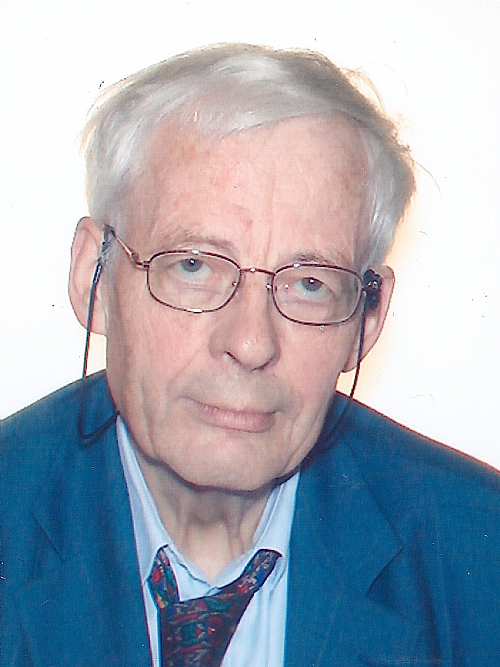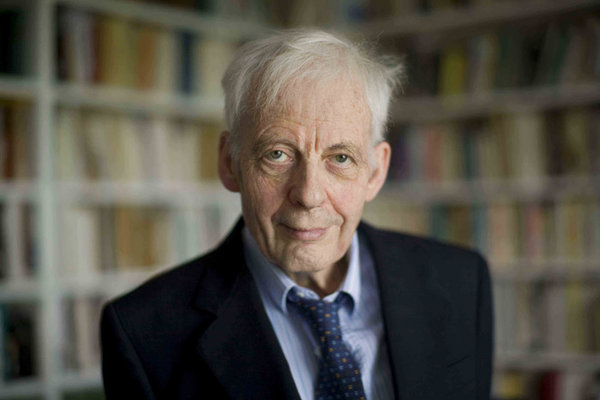<Back to Index>
- Historian Emmanuel Le Roy Ladurie, 1929
PAGE SPONSOR


Emmanuel Le Roy Ladurie (born 19 July 1929) is a French historian whose work mainly focused upon Languedoc in the ancien regime, particularly the history of the peasantry.
Le Roy Ladurie was born in Les Moutiers - en - Cinglais, Calvados, the son of Jacques Le Roy Ladurie, minister of Agriculture for Marshal Philippe Pétain and subsequently a resistant. The historian was educated in Caen at the Collège Saint - Joseph, in Paris at the Lycée Henri - IV and in Sceaux at the Lycée Lakanal. He was awarded an agrégation in history from the École Normale Supérieure and a doctorat ès lettres from the University of Paris. Le Roy Ladurie has taught at the Lycée de Montpellier, the University of Montpellier, the École Pratique des Haute Études in Paris, the University of Paris and at the Collège de France, where he occupied from 1973 to 1999 the chair of History of Modern Civilization and was later emeritus professor.
Le Roy Ladurie was a member of the French Communist Party (PCF) between 1945 and 1963. He left the party after doubts caused by the 1956 Hungarian Revolution became too much for him. He then analyzed his political engagement and Communism in Ouverture, société, pouvoir: de l’Édit de Nantes à la chute du communisme (2004) and Les grands procès politiques, ou la pédagogie infernale (2002).
Le Roy Ladurie often wrote for Le Nouvel Observateur, L'Express and Le Monde newspapers and also appeared on French television.
Le Roy Ladurie first attracted attention with his doctoral thesis, Les paysans de Languedoc, which was published as a book in 1966 and translated into English as The Peasants of Languedoc in 1974. In this study of the peasantry of Languedoc over several centuries, Le Roy Ladurie employed a huge range of quantitative information, such as tithe, wage, tax, rent and profit records, together with the use of the theories of such thinkers as Ernest Labrousse, Michel Foucault, David Ricardo, Fernand Braudel, Claude Lévi - Strauss, Thomas Malthus, François Simiand, Sigmund Freud and Max Weber, to contend that the history of Languedoc was "l'histoire immobile." He argued that the history of Languedoc was marked by waves of growth and decline that in essence changed very little over the passage of time.
Le Roy Ladurie proposed that the determining feature of life in Languedoc was the culture of the people who lived there. He maintained that the reason why the people of Languedoc could not break the cycles of advance and decline was not so much technological factors, but was due to culture that prevented the people from developing more progressive technology and farming practices. In Le Roy Ladurie's view, there were "structures" comprising long term and slowly changing material and mental patterns which underlined the more dramatic and, in his opinion, less important "conjoncture" of trends and events, upon which traditionally historians have focused. Like Braudel, Le Roy Ladurie believes that it is the history of the "structures" that really mattered, but unlike Braudel, Le Roy Ladurie has expressed an interest in biography and the histoire événementielle (history of events), which Braudel dismissed as irrelevant.
Le Roy Ladurie's best known work is Montaillou, village occitan de 1294 à 1324 (1975), a study of the village of Montaillou in the region of Languedoc in the south of France during the age of the Cathar heresy. In this work, he used the meticulous notes of a member of the Inquisition, Jacques Fournier who served as the Bishop of Pamiers between 1318 and 1325 before becoming Pope Benedict XII, to develop a multi - layered study of life in a small French village over the course of several years. Le Roy Ladurie used the records of interrogations conducted by Fournier to offer a picture of both the material and mental worlds of the villagers. He examined the former as reflected in farming practices, houses, relations with other villages and with both secular and ecclesiastical power, and the latter as reflected in their beliefs about God, fate, sexuality, death, life, marriage, magic, space, time and salvation.
Another work was Le Carnaval de Romans: de la chandeleur au mercredi des cendres (translated into English as Carnival in Romans) which dealt the 1580 massacre of about twenty artisans at the annual carnival in the town of Romans - sur - Isère, France. In this book, Le Roy Ladurie used the only two surviving eyewitness accounts of the massacre (one of which was hostile towards to the victims of the massacre by Guérin, the other sympathetic yet often inaccurate by Piémond), together with such information as plague lists and tax lists, to treat the massacre as a microcosm of the political, social and religious conflicts of rural society in the latter half of the 16th century in France.
This book provides an example of a micro - historical approach to the social structure of the town of Romans and tax rebellions in early modern France.
Other more recent treatments of social history by Le Roy Ladurie include La sorcière de Jasmin (translated into English as Jasmin's Witch) and Le siècle des Platter, 1499 - 1628 (translated into English as The Beggar and the Professor: A Sixteenth Century Family Drama). In Jasmin's Witch, Le Roy Ladurie following the lead of Carlo Ginzburg, who argued that the idea of witchcraft as held by peasants was very different from the idea of witchcraft held by judges and churchmen. To understand the "total social fact of witchcraft," Le Roy Ladurie used an 1842 poem Françouneto written by Jacques Boè and based on a traditional French peasant folk tale. Le Roy Ladurie contended that the poem contains many authentic traces of popular beliefs about witchcraft in rural France during the 17th and 18th centuries. Le Roy Ladurie argued that the "crime" of the "witch" Françouneto was the violation of the unwritten social code of "limited wealth," namely that she increased her own wealth at the expense of others. In The Beggar and the Professor, Le Roy Ladurie used the letters and memoirs of the Platter family to examine the social values of the 16th century, especially in regards to religion, medicine, crime, learning, and taxes.
Through best known for his work in "microhistory", Le Roy Ladurie also examined the political history of France between 1460 and 1774. One of his best known books on political history was L'Etat royal: de Louis XI à Henri IV, 1460 - 1610 (translated into English as The French Royal State: 1460 - 1610). In this book, Le Roy Ladurie argued that the major concerns of the French Crown were the economy, the Reformation and aristocratic politics, and that the major reasons for the growth of the French state was military expansion into Italy, Provence and Burgundy and its rivalry with Spain.
In a sequel, Ancien Régime: de Louis XIII à Louis XV, 1610 - 1774 (translated into English as The Ancien Régime), Le Roy Ladurie argued that there was a close connection between the domestic and foreign policies of the French Crown. In particular, he argued that periods of authoritarianism in domestic policy coincided with periods of aggression in foreign policy, and that periods of liberalism in domestic policy coincided with periods of peace in foreign policy. Despite certain lapses in the 1750s, Le Roy Ladurie argued that the reign of Louis XV was characterized by liberalism at home and peace abroad, while the rule of Cardinal Richelieu and Louis XIV was marked by aggression and authoritarianism. At the end of his two volume history, Le Roy Ladurie stated that the growth of popularity of Enlightenment ideas, anti - clericalism, and liberalism had by 1774 already placed France on the road to the French Revolution.
One of the most prolific contemporary historians, his mentor was Fernand Braudel, a prominent member of the Annales School. At the beginning of the 1970s, Ladurie founded the movement of the "Nouvelle histoire" (New History). Le Roy Ladurie was a leading champion of "microhistory," in which a historian uses the study of an event, locality, family or life to reveal the "structures" which underlie life in the particular period under study. Some, like Niall Ferguson, have questioned the value of "microhistory," arguing that it is wrong to assume that the study of one village or one incident in one town or one family reveals wider patterns of life in France, let alone the rest of Europe. Another line of criticism has centered around Le Roy Ladurie's use of the term "structures." His critics contend that he has never clearly defined the term, nor explained why "structures" change over time, or even whether the "structures" Le Roy Ladurie purports to find exist.
Le Roy Ladurie also worked on the history of French regions (Histoire de France des régions, 2004) and on anthropometric history as well as on the impact of climate changes on human history. Besides writing books, Le Roy Ladurie was a prolific essayist writing on variety of subjects such as the utility of computers as method of historical research, rates of delinquency in the French Army in the 19th century, the spread of global diseases and the belief of French peasants that magic could be used to generate impotence. Le Roy Ladurie also became known as one of the first modern environmental historians because his work focused on human agency in environmental change, as well as environmental factors in human history.